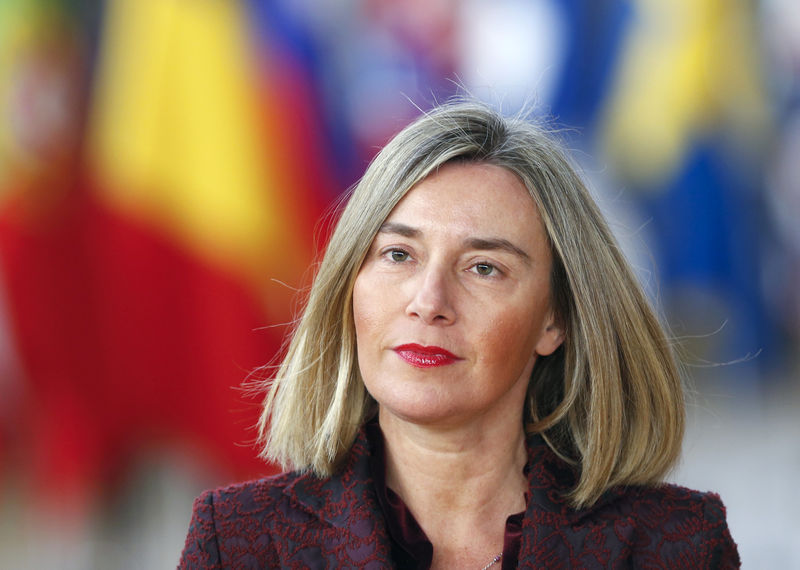 © Reuters. FILE PHOTO: EU summit in Brussels
© Reuters. FILE PHOTO: EU summit in BrusselsBy Robin Emmott
BRUSSELS (Reuters) – The European Commission proposed on Wednesday a foreign policy plan to improve transport, energy and digital infrastructure links with Asia but denied seeking to counter China’s ambitions that have raised suspicion in Western capitals.
The plan, which would be backed by additional funds from the EU’s common budget from 2021, private sector loans and development banks, amounts to a strategic response to China’s largesse in much of central Asia and south-eastern Europe, where Beijing has invested billions of dollars.
The 13-page strategy outlined by the EU executive did not specify how much the bloc would spend, but the Commission is relying on a proposed 60 billion euro ($70 billion) fund that would act as an insurance for investors if projects fail.
That fund could raise more than 300 billion euros between 2021 and 2027 by attracting investors into projects by offering a guarantee to cover the costs if a project fails.
Although not all money would be spent in Asia, the Commission’s strategy, once agreed by EU governments, would make spending on infrastructure links with Asia official EU policy.
EU foreign ministers are expected to approve it at a meeting on Oct. 15, three days before an summit between European and Asian leaders in Brussels.
Since 2013, China has launched construction projects across more than 60 countries, known as the Belt and Road Initiative, seeking a network of land and sea links with Southeast Asia, Central Asia, the Middle East, Europe and Africa.
EU foreign policy chief Federica Mogherini said the Commission’s proposal was not linked to any Chinese policies.
The Asian Development Bank estimates Asia requires more than 1.3 trillion euros a year in infrastructure investment, not all of which can be met by China, the Commission said.
“Our proposals, our policies and our calendar are not determined elsewhere,” Mogherini told a news conference when asked if the plan was a challenge to Beijing. “It is not a reaction … to another initiative … be it in Beijing, Washington, Moscow or Timbuktu.”
However, EU officials said they are concerned about what they see is a Chinese investment model which lends to countries for projects they may not need, or be able to afford, making them reliant on Chinese help once under way.
A Chinese-funded highway to link Montenegro’s Adriatic coast to landlocked neighbor Serbia has so indebted Montenegro that the International Monetary Fund has told the country it cannot afford to finish the project.
Jan Weidenfeld, an expert on Europe-China relations at the Mercator Institute for Chinese Studies (MERICS) in Berlin, said the EU plan was “very much a response to Belt and Road.”
“The main message is that when you’re creating large-scale infrastructure projects, you need to abide by certain norms or standards, whether they be environmental or financial. The EU sees a window of opportunity to steer Chinese policies here,” Weidenfeld said.
($1 = 0.8566 euros)
Fusion Media or anyone involved with Fusion Media will not accept any liability for loss or damage as a result of reliance on the information including data, quotes, charts and buy/sell signals contained within this website. Please be fully informed regarding the risks and costs associated with trading the financial markets, it is one of the riskiest investment forms possible.
Source: Investing.com





























